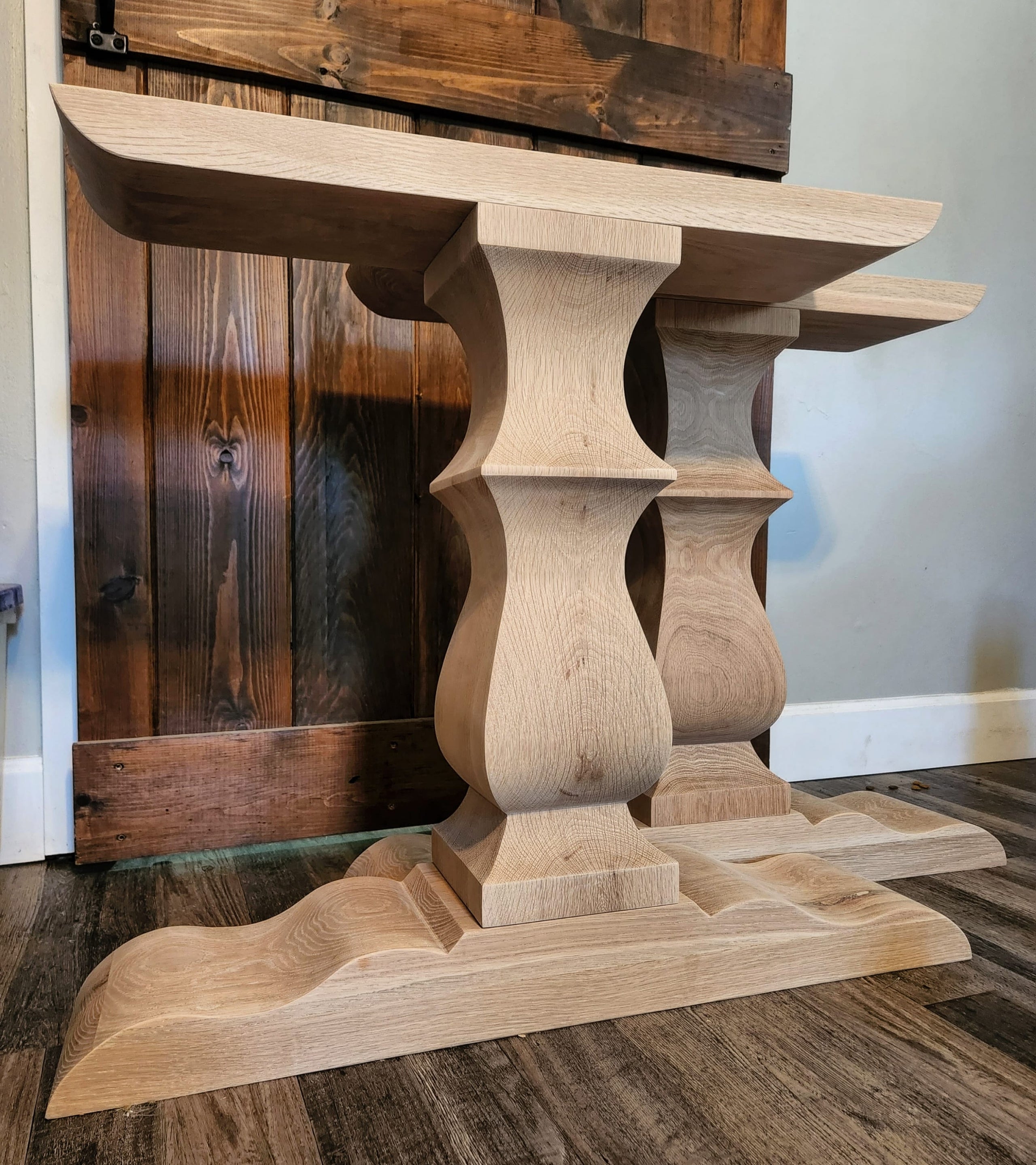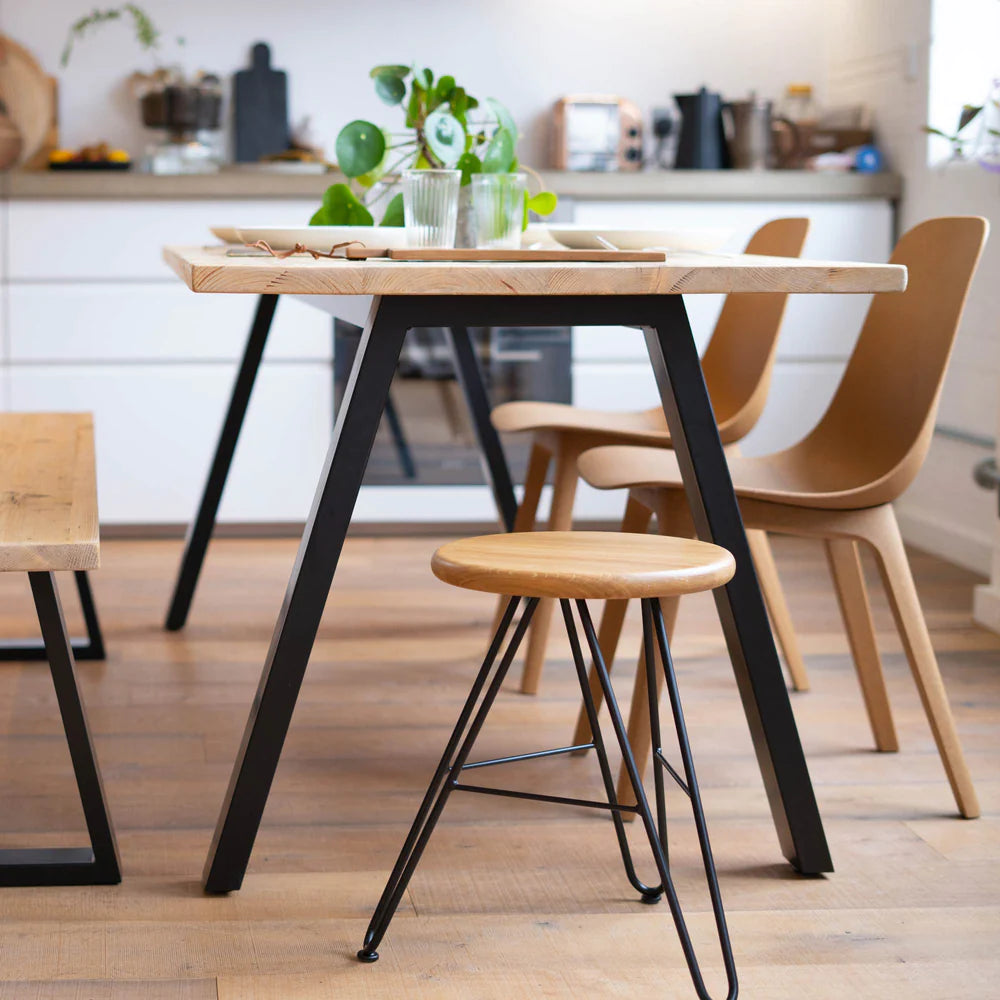Dining Room Table Legs: A Guide to Selecting the Right Style for Your Home
Expert Tips for Putting Up Dining-room Table Legs for Maximum Stability
When it comes to mounting dining-room table legs, achieving maximum stability is extremely important for both capability and aesthetics. The process begins with picking the ideal materials and equipment, adhered to by thorough placement and consideration of weight circulation. Each step plays a vital function in making certain that the ended up item endures day-to-day use without endangering safety or style honesty. Understanding the subtleties of these elements can dramatically influence the general outcome. What details methods can boost security even better?
Choose the Right Legs
When choosing the appropriate legs for your eating area table, it is vital to take into consideration both functionality and looks. The legs you choose will substantially affect the total design and stability of the table. Evaluate the table's intended use; if you anticipate frequent events, sturdier legs, such as those made from solid timber or metal, might be much more appropriate, as they use boosted resilience and support.
Standard eating tables normally range from 28 to 30 inches in elevation, so guarantee the legs align with this standard for convenience. Tapered legs can include a contemporary touch, while turned legs might share a much more timeless visual.

Select Appropriate Equipment
How can the ideal equipment improve the security and durability of your eating space table? The choice of proper equipment is important to ensuring that the legs of your table are safely connected and able to hold up against routine usage. Premium screws, screws, and braces supply the essential strength to support the weight of the table, in addition to any extra tons positioned upon it during events or dishes.
When picking screws, choose for those made from long lasting products such as stainless-steel or brass, which stand up to rust and preserve stability gradually. The size of the screws is just as vital; they should penetrate deeply into the table's framework without compromising integrity. For bolted connections, think about making use of lock washing machines to stop loosening because of resonance or activity.
Additionally, utilizing corner braces can include added support, especially for larger tables or those with larger tops. These braces disperse weight equally and help maintain the table's form. Ensuring that the equipment you pick is appropriate for the details products of your table will further enhance its total stability and longevity, allowing you to enjoy your eating experience for many years to come.
Ensure Proper Alignment
Correct positioning of dining area table legs is vital for both aesthetic allure and practical security. To achieve optimum positioning, begin by gauging the range from the table's corners to the leg add-on points.
Use a degree during setup to validate that each leg is vertical to the tabletop. It is suggested to mark the desired leg positions on the underside of the table with a pencil or covering up tape prior to securing them.
Furthermore, verify the positioning review after the first screws are tightened up, as changes might be necessary before completely securing the hardware. By prioritizing proper alignment, you not only enhance the table's overall style but also make sure that it continues to be stable and practical for years to find.

Take Into Consideration Weight Circulation
After making certain appropriate alignment of the dining-room table legs, it's crucial to think about weight distribution to boost stability and functionality. dining room table legs. Correct weight distribution is essential in preventing tottering and ensuring that the table can sustain its desired lots without danger of tipping or collapsing
When placing the legs, ensure they are positioned at equivalent ranges from the center of the table to equally distribute the weight throughout the More Bonuses framework. Think about the weight of the tabletop and any type of items that will regularly hinge on it, such as attractive pieces or tabletop home appliances. Tables with larger surface areas should ideally have legs positioned closer to the edges, as this takes full advantage of the base of support and lessens the risk of instability.
In addition, if the table is intended for use in a high-traffic location, think about using much heavier products for the legs or including supporting elements, such as cross-bracing or a you could look here lower rack - dining room table legs. These changes can help keep balance and stop changing during usage. Eventually, a well-considered weight circulation strategy will dramatically enhance the table's total performance, ensuring it continues to be a practical and attractive centerpiece for your dining area
Test Stability Before Use
Examining the stability of the dining-room table prior to usage is a crucial step that must not be overlooked. Guaranteeing that the table is stable and protected can avoid mishaps and lengthen the lifespan of the furnishings. Begin by applying gentle pressure to different factors on the table surface area. Lower on the center and after that along the sides, moving or observing any wobbling. If the table reveals instability, determine the legs or joints that may require adjustment.
Next, examine that all screws and fasteners are tightened up properly. Loose connections can cause instability and prospective damages in time. If needed, make use of wood glue on joints to enhance security, guaranteeing to enable adequate drying time.

Verdict
To conclude, the setup of dining-room table legs needs careful factor to consider of materials, alignment, weight, and equipment circulation to attain maximum security. By choosing premium fasteners and tough legs, making sure precise positioning, and dispersing weight equally, the structural honesty of the table can be considerably improved. Carrying out a security test before normal use further guarantees that the table will stand up to day-to-day stress, therefore offering a reputable and secure eating experience.
When it comes to mounting dining room table legs, accomplishing optimum stability is vital for both functionality and aesthetics. The legs you pick will substantially influence the overall style and security of the table (dining room table legs). Typical eating tables commonly vary from 28 to 30 inches in height, so ensure the legs line up with this standard for convenience.Correct placement of eating room table legs is necessary for both visual appeal and practical stability.In verdict, the installation of dining area table legs calls for careful consideration of products, weight, equipment, and alignment circulation to accomplish optimum security